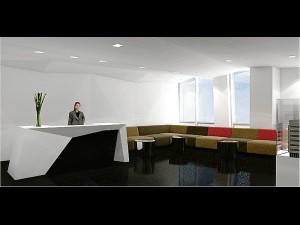
DEEP-TONED floors can look really crisp and smart, especially when they are of a polished material. They absorb light, and allow the objects sitting on it, especially when they are bold or light in color, to stand out and appear to float.
If there is anything I truly miss in the urban jungle, it is seeing the intense darkness of the night sky. We hardly have really clear skies in the city, what with the smog blanketing the metro and the city lights reflecting back down, just like your car headlights would as you drive through a foggy road. We often get that strange orange cast in the night sky. And cloudy nights occur practically half of the year, giving us the same strange orange glow for most of our time. I look for them, but I can’t always see, the stars.
There is something awe-inspiring and dramatic about the darkness of the evening sky. While others may find it melancholic and even depressing, I find a pervading sense of wonder, of grandness and conversely, of smallness, in staring at such an immense and boundless space. It can be hauntingly beautiful too, especially when the oranges at sundown turn to purple as the twilight slowly brings in the night, unfolding even darker blue skies, that shift into midnight blues and eventually into blackness.
But darkness and dark colors insinuate many other aspects. In business, dark colors symbolize power, strength and aggression. That’s why the Wall Street men are suited up in dark colors and our real and reel-life villains are almost always cloaked in black. Black and its variants of dark tones leave a variety of impressions: Grays with the blue hues denote masculinity, deep thought and romance, while the warmer reddish hues colors connote authority, hostility and violence. The darker brown tones are suggestive of the natural environment and the finer things in life like leather, timber and tobacco. They also imply wisdom and sensibility. These days, brown tones are quite popular and are considered matured and sophisticated.
While I like to design my spaces to be bright and airy, I am often mystified by the drama played out by dark surfaces. When wrongly utilized, they may appear somber, murky and even sinister, but I see dark surfaces as a bold backdrop that allows us to highlight everything against it, much like the constellations seen against the evening sky. Depending on the actual materials used—color hue, intensity, texture and patterns—dark surfaces can create a variety of experiences.
Deep-toned floors can look really crisp and smart, especially when they are of a polished material. In their glazed state, they can even border on being feminine. A dark matte floor, on the other hand, can look more masculine and industrial; and a heavily textured one, will appear rustic, resort-like or rural. Used in places that are lit naturally by overflowing sunlight, they curb reflectance and absorb the light, getting rid of too much glare. Dark floors absorb light, and when lit up, allow the objects sitting on it—especially when they are bold or light in color—to stand out and appear to float.
Dark colors used on walls can make the surfaces appear sunken in. A room with dark walls will not necessarily look smaller, especially if the wall surface is intensely dark, as it will instead appear to recede, and thus create the sense of a deeper space. I like dark walls for how they surround the decorative elements: artwork, photo frames, window treatment and even door openings. When spotlighting is used on them, they appear to jump out of the wall in all their brightness.
On ceilings they have the same effect. Walking into a room with dark ceilings make you feel like you walked right out and into the open, for a dark ceiling mimics the evening sky, and makes the ceilings feel like they aren’t there at all. I remember we used a deep aubergine color in an apartment, and in the evenings, when only mood lights were switched on, the place felt like it sat under the night sky. It actually felt romantic. Used in the right intensity, a dark ceiling color can make the ceiling appear farther up and away, whether day or night.
The perception of a dark surface: intense, mysterious and seemingly without depth, allows us to create different temperaments within a room. It can also alter the perception of space and—with a play of lights—create a variety of experiences. Dark surfaces make great hosts to the things we enjoy looking at, including—for lack of the real thing—a mimicked night sky.

